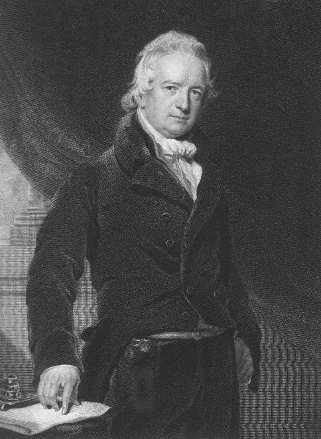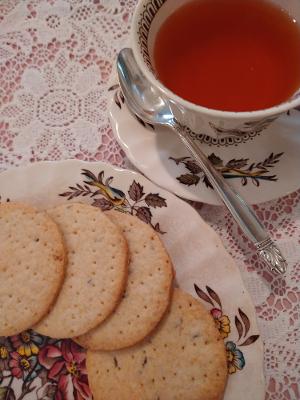Carolyn McDonald Graf
It is sometimes assumed that Abernethy Biscuits are named for the town of Abernethy Scotland. Unfortunately, although very popular in Scotland, these biscuits are named for Dr. John Abernethy of England.

He was the chief surgeon at St. Bartholomew’s Hospital in London. Along with others of the early 1800’s, such as Sylvester Graham, inventor of the Graham Cracker, Dr. Abernethy strongly believed that most diseases were caused by stomach disorders. Dr. Abernethy often lunched at a bakery and suggested that the baker add some ingredients to his plain biscuits: sugar for energy and caraway seeds for calming digestion. The baker obliged and named the biscuits after Dr. Abernethy. His was one of many digestive biscuits intended to calm the stomach and aid digestion.
This coincided with the rise in tea shops and the biscuits quickly were added to the other tea time treats and became quite famous.
Abernethy biscuits are still popular in Scotland and are made commercially by several bakeries, notably in Edinburgh, the Orkney Islands, the Shetland Islands and the Isle of Lewis. These biscuits, which would be called cookies in the U.S., are not very sweet and go well with tea as a dessert or with cheddar as an appetizer.

Ingredients
- 2 cups flour
- 1 level teaspoon baking powder
- 6 tablespoons butter
- 1/3 cup sugar
- 1 teaspoon caraway seeds
- 1 beaten egg
- 1 tablespoon milk approx. (my batter took 2)
Mix the flour and baking powder in a bowl, then rub in the butter until it is like coarse breadcrumbs. Add the sugar and caraway seeds, mixing well. Stir the milk and egg together and add to the flour. Mix well until it makes a stiff dough. Put on a lightly floured surface and roll out very thin. Cut into 3” rounds. Put on a lightly greased baking sheet (or on parchment paper) Prick surface with a fork and bake at 375 ° for 12 to 15 minutes or until lightly brown. Cool on a rack.
Adapted from Traditional Scottish Cooking by Theodora Fitzgibbon, 1980

